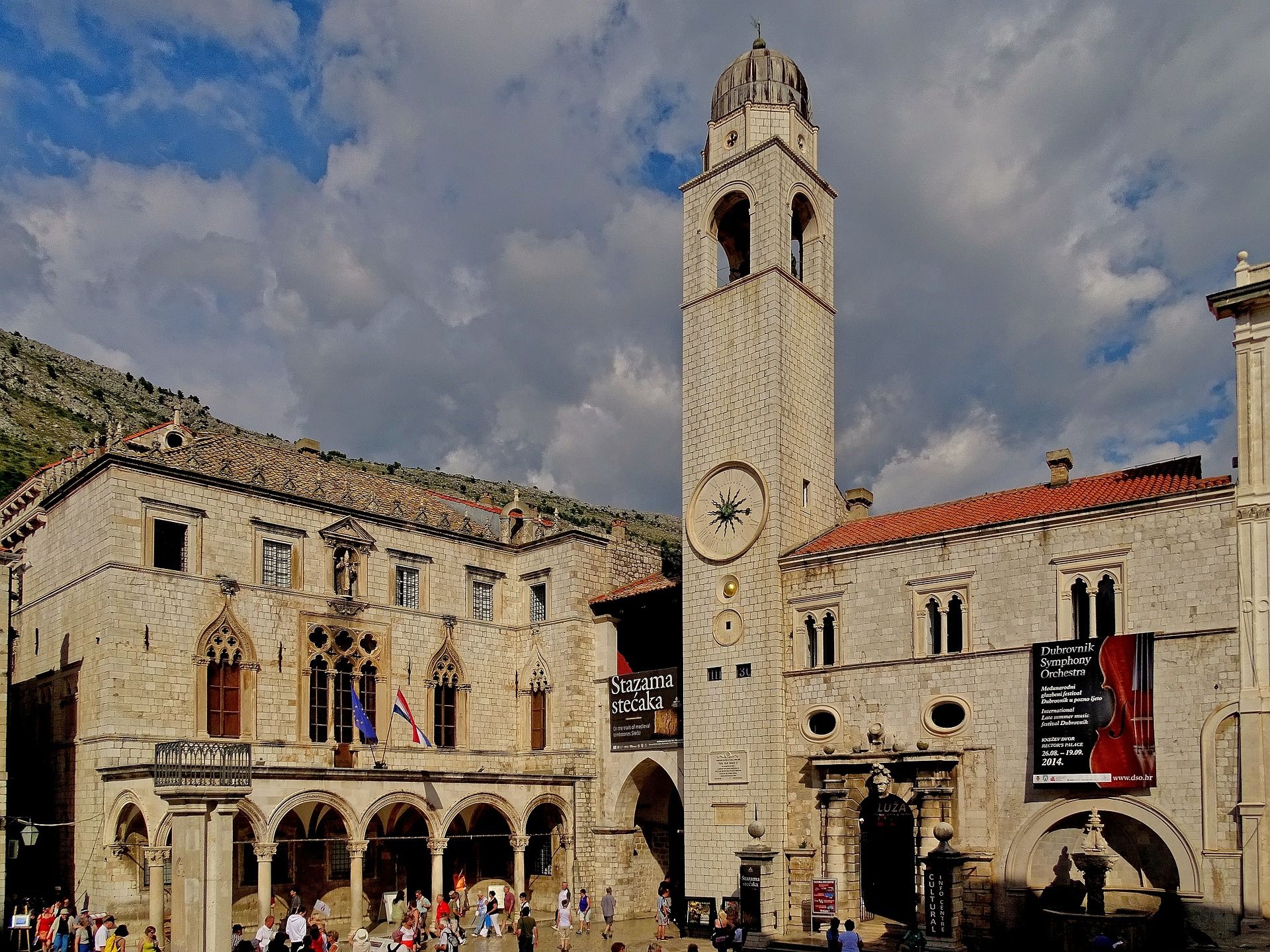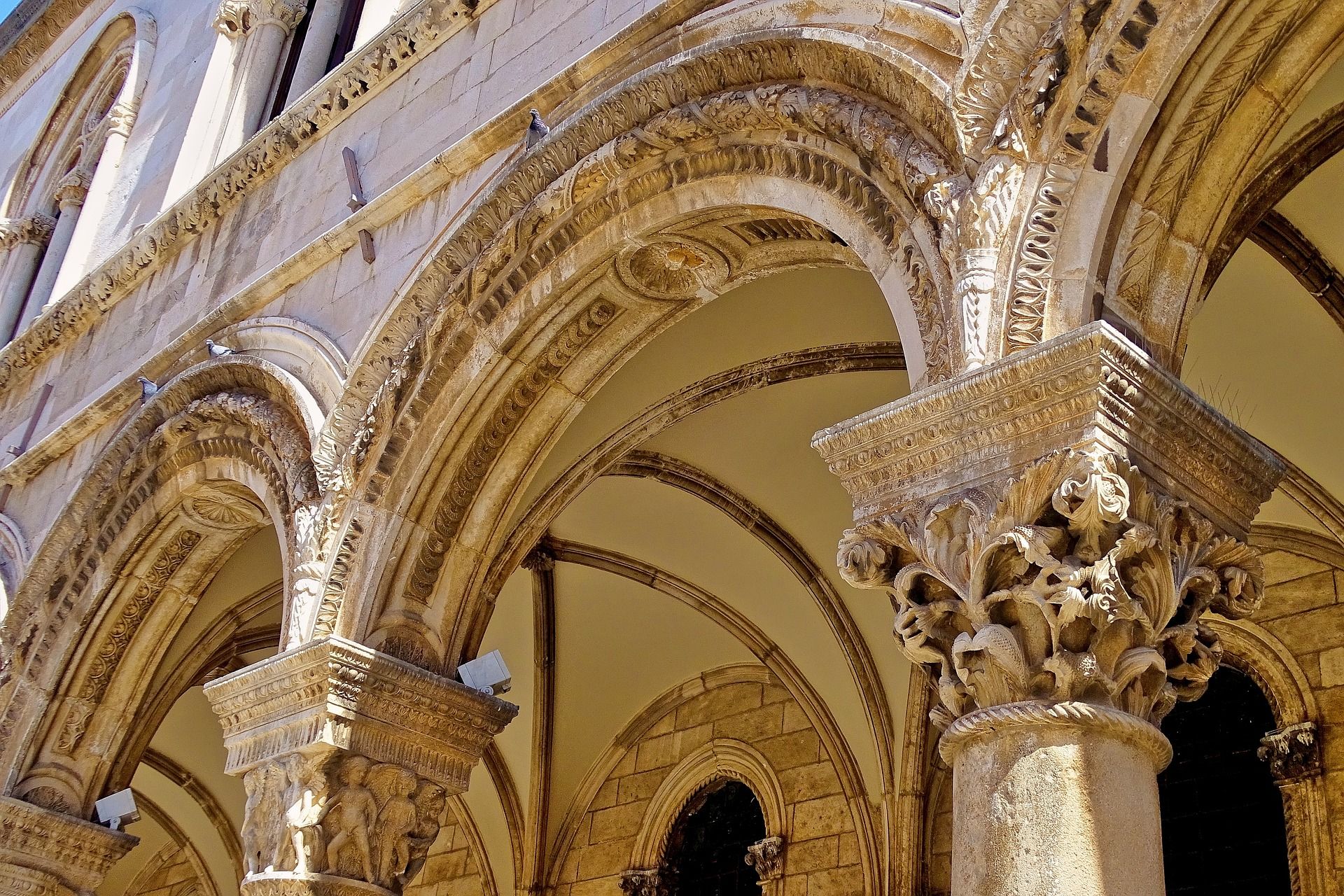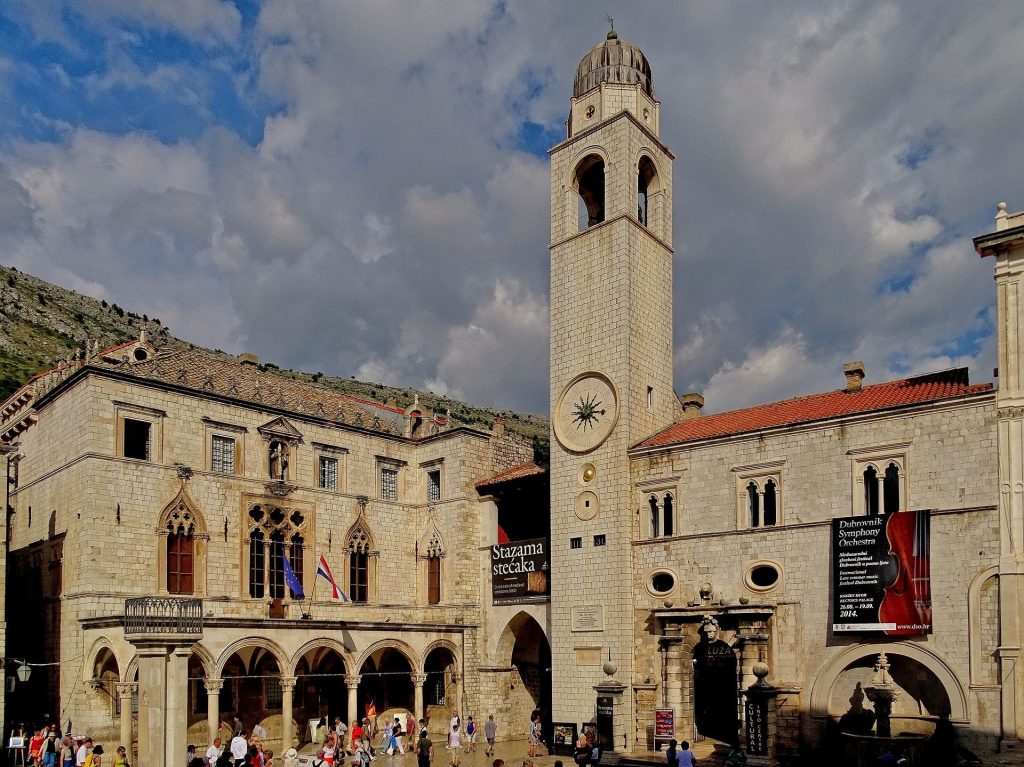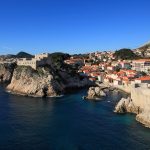You’ll have definitely taken photos of them, and probably also gone inside them, but how much do you really know about the Rector’s Palace and Sponza Palace?
Dubrovnik boasts more history and priceless heritage than could ever possibly be condensed down into one article, but there are some buildings that just stand out more than the rest.
If you’ve entered the UNESCO Old City through Ploče gate (Vrata od Ploča), you’ll have been greeted by the stunning, architectural wonder that is Sponza Palace to your right. The very first building you meet upon arriving to Stradun is a feast to the eyes. Sponza Palace, its name deriving from ”spongia”, which means the ”place at which rain water is collected”, is aesthetically astonishing and the inspiration for many a photograph, you’re highly unlikely to have managed to sail past this one, especially if you’ve visited during the Dubrovnik Summer Festival, where Luža square, located just in front of the palace, is traditionally used for the opening ceremony.
Sponza Palace was first constructed back in the 16th century
This incredible mixture of Gothic and Renaissance was first built by the well known Dubrovnik (Ragusan) architect Paskoje Miličević Mihov (1440-1516) back in 1516, with construction ending only in 1522 after Mihov passed away during the very first year of Sponza Palace’s construction. Among others to work on additions to the palace were the Andrijić brothers, who crafted the palace’s many sculptures. Despite unfortunately not being the one to finish his work, Mihov was no stranger to a challenge and had an unmatched talent for such tasks, the man who worked on the fortifications of both the Walls of Dubrovnik, otherwise the city’s top attraction to this very day, and those of the mighty Ston walls, often referred to as the European Wall of China, Mihov knew how to do an excellent job.
Otherwise, Mihov, who is more than worth paying attention to, well and truly left his mark on the City of Dubrovnik (then the autonomous Republic of Ragusa). Aside from Sponza Palace and working on the aforementioned fortifications of the walls of both Ston and Dubrovnik, he also designed three bridges, two of which were built in the 15th century and lead to the Revelin Fortress to this day.
The Ragusan palace has served as a bank, an armoury, a treasury, a customs office, a warehouse, and even a school
Not just a pretty face, you might say. Being as old as it is, you can probably guess that Sponza Palace has seen its fair share of coming and going over the very, very many years since its original construction. Built during the time of the autonomous Republic of Ragusa (Dubrovnik Republic/Dubrovačka Republika), Sponza Palace even managed to survive the devastation of the huge 1667 earthquake which all but flattened the city, killing most of its residents and causing fires to rip through any buildings that were still left standing. The palace’s atrium, which is still used today for concerts and other performances due to the incredible sound the walls produce when met with live music, was once used as a meeting place for trade and other business. If you look up when standing inside the atrium you’ll see an old inscription which translates to ”Our weights do not permit cheating. When I measure goods, God measures with me.”
Owing to its convenient, main position within the heart of the city, its beautiful design and its size, the palace has naturally held numerous different functions over the centuries, even becoming the Ragusan Republic’s cultural center following the establishment of a literary academy created during the 16th century.
Sponza Palace is home to Dubrovnik’s city archives, dating back to the twelfth century
And you can probably imagine just how many documents there are sitting in Sponza Palace, from far further back than our minds will allow us to wander or can even manage to begin to comprehend. If you really want your mind to be blown, it’s worth mentioning that the oldest known document that calls Sponza Palace home in the modern day dates back to the year 1022! These invaluable, precious and ancient documents and files were once housed at the Rector’s Palace, so let’s get on to that one next.

The Rector’s Palace! Another Gothic/Renaissance style building with beautiful Baroque features that stands out of the crowd among an already aesthetically pleasing city. To be noticed among an entire city of stunning architecture is no easy feat, but the Rector’s Palace manages to do just that. The palace which served as the seat of the Rector (hence the name) of the Rector of the Republic of Ragusa, from the 14th century right up until the demise of the Dubrovnik Republic in 1808, attracts eyes and camera flashes from all over, why not get to know it a little better?
Originally constructed during the Middle Ages, the first building was destroyed during a fire
Back in 1435, the original building met its end in a blaze and the town officials decided to construct another palace in its place. The job was offered to a keen and highly talented builder from Naples, Onofrio della Cava. In addition to the palace building itself, another Italian, Pietro di Martina, decorated the Gothic style building with intricate and ornate sculptures. Alas, one would think the palace had had a curse placed on it as not even that model was meant to be, with a gunpowder incident causing significant damage to the final building in 1463.
The job of renewing the damaged palace was offered to yet another Italian – the well known Florence architect, Michelozzo
Michelozzo’s plans weren’t welcomed as his design was believed to have been leaning far too much towards a Renaissance style look, and to date, despite its rather bad fortune, the palace had been Gothic. Following the rejection of Michelozzo’s ideas, other local builders continued working on re-doing the palace. The beautiful porches that can be seen today draw the attention of many, and with good reason, these, certainly the most characteristic parts of this building, are believed to have been the handywork of yet another Italian architect, Salvi di Michele. The reason for this belief is because di Michele is known to have taken over the works by the time 1467 rolled around.
All was well, and then came not one earthquake, but two…
Yes, that’s right, the poor Rector’s Palace couldn’t catch a break and was damaged during the lesser known earthquake of 1520, and once again during the much larger earthquake that occurred, as previously mentioned, in 1667, which saw the city almost entirely ruined and the vast majority of its former population tragically wiped out. As I mentioned a bit further up, Sponza Palace survived, but the Rector’s Palace wasn’t blessed with such luck.
Reconstruction began, once again
Gothic style building didn’t seem to bring a great deal of luck to the Rector’s Palace, which simply seemed to be a doomed project, and so came a Baroque design. The atrium of the building, which is still just as impressive in the modern day as it was back then, was equipped with an elaborate looking stairway, as well as a bell. By the time 1638 rolled around, a statue to a local islander named Miho Pracat was constructed. The Lopud native was an extremely wealthy ship owner, who gave his riches to the City of Dubrovnik after his death.
The Rector’s Palace was the seat of the Rector of the Republic of Ragusa from the 14th century, right up until the year 1808
As touched on in the introduction to the history of this palace, the name comes from the fact that this, in spite of its numerous ”misfortunes” over the centuries, had been the seat of the Rector. This most esteemed function earned it its title, which translates to Knežev dvor in Croatian (the seat of the Knež). It also held the functions of the state administration, which was then, of course, entirely separate in Dubrovnik, and acted as the seat of the Ragusan Minor Council until the collapse of the Republic. Since 1872, the palace has naturally been the home of the History Department of the Museum of Dubrovnik.

Don’t forget to pay both palaces a visit next time you’re in the Pearl of the Adriatic!









